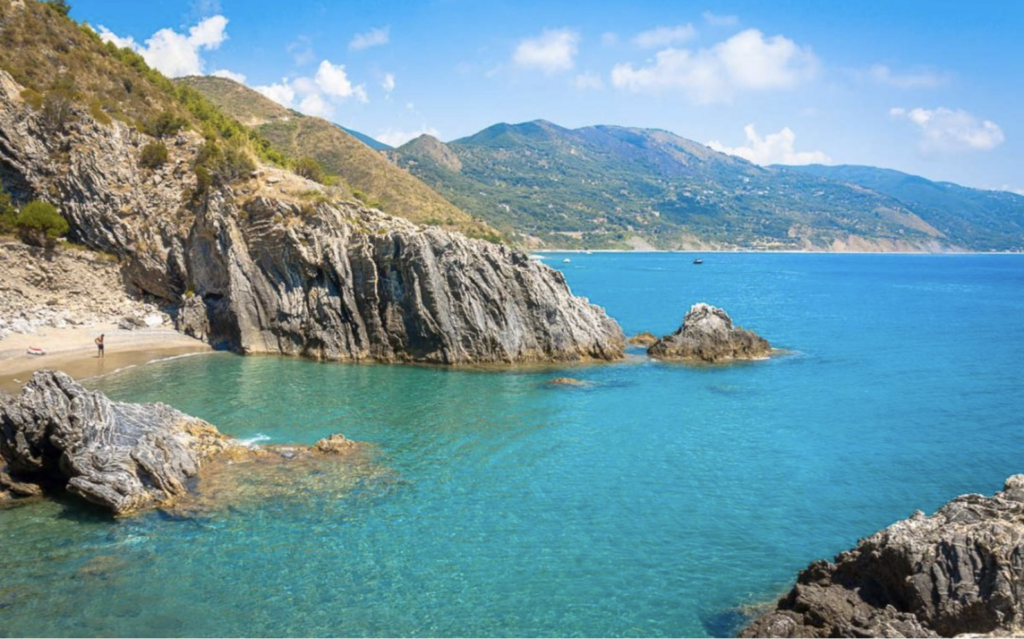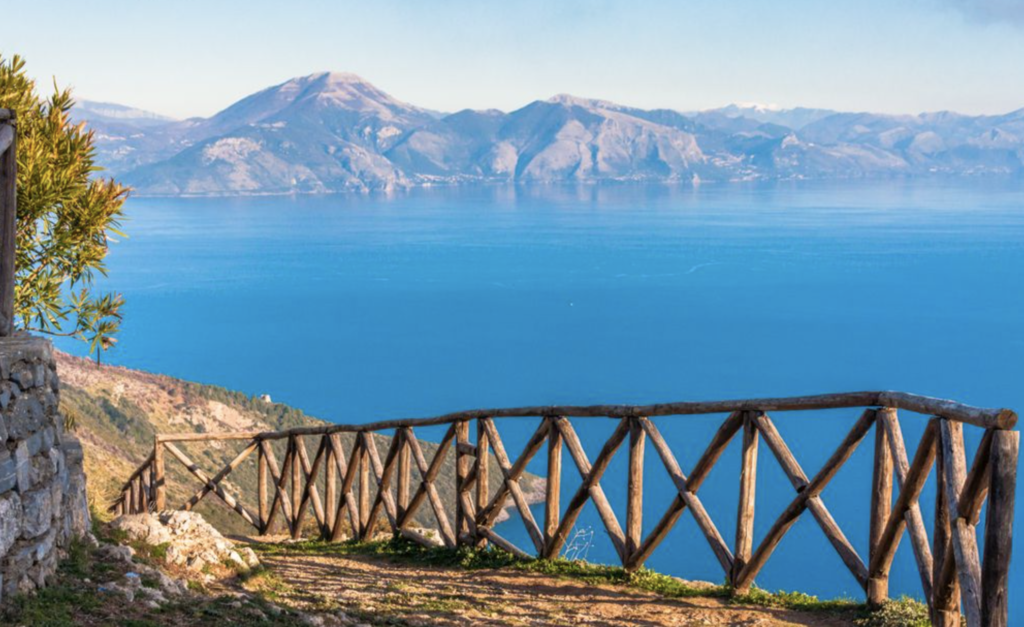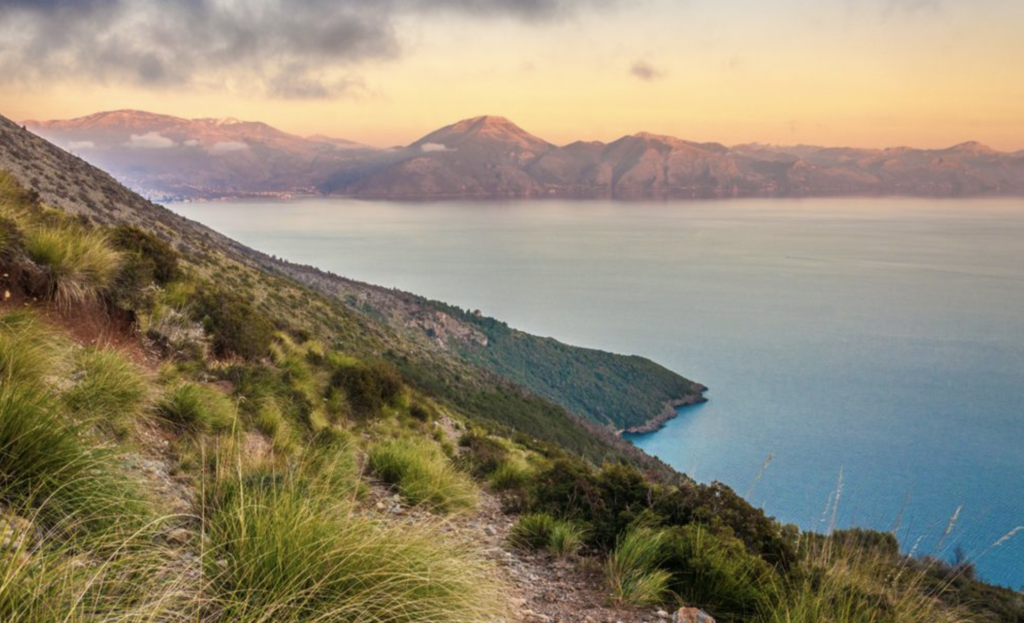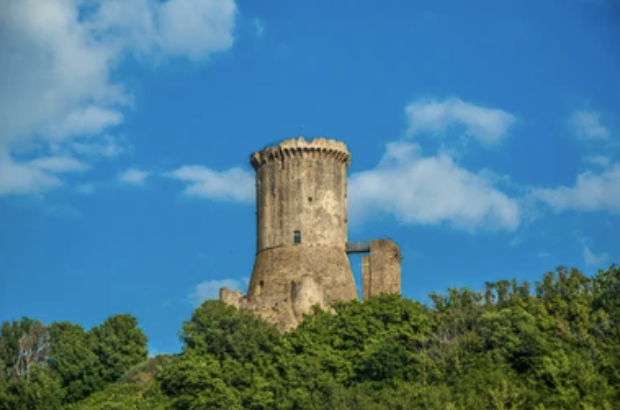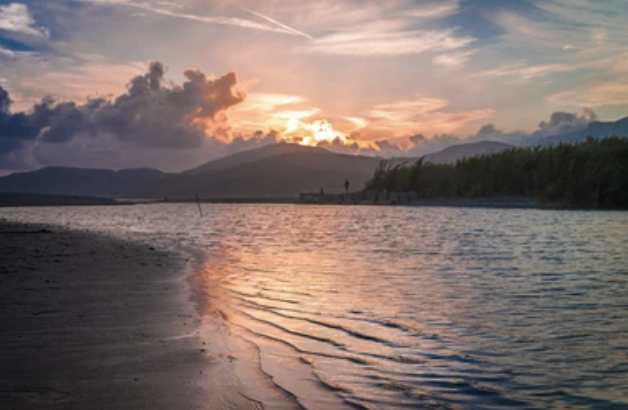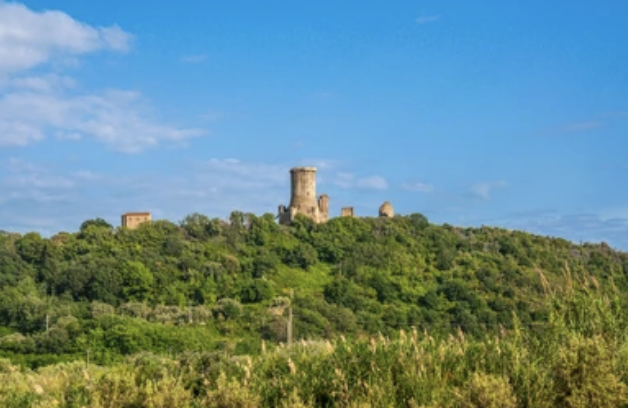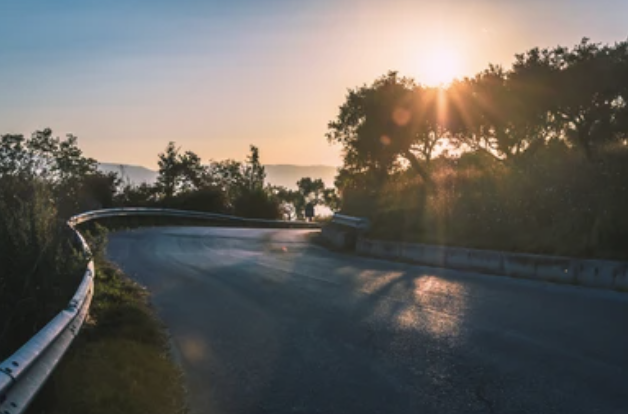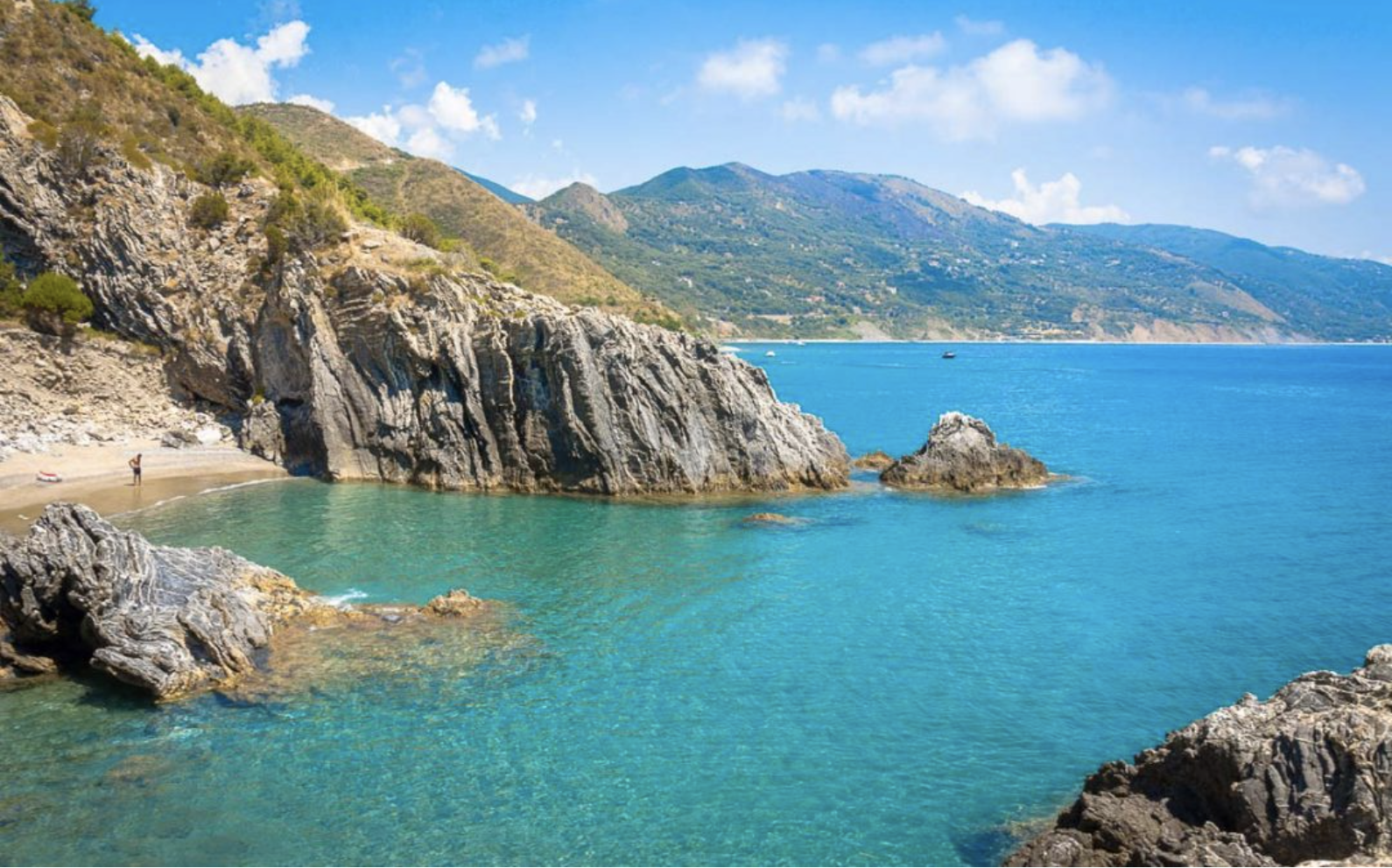Exploring the Cilento Region: Italy’s Hidden Gem
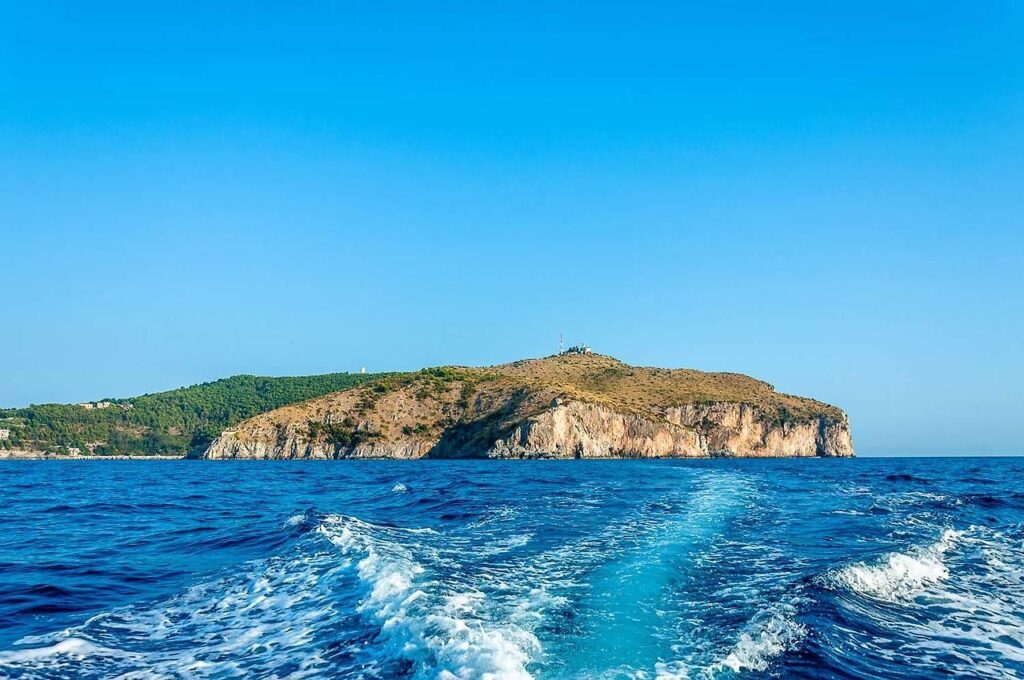
Table of Contents
- Where is Cilento?
- Why visit Cilento?
- Where to stay in Cilento?
- Towns and Villages on the Seaside:
- Local dishes and gastronomy
- What to Visit ?(Paestum, Padula, Velia)
- Vallo di Diano National Park
- Outdoor Activities
- Festivals and Events
- How to Get There?
Where is Cilento in Italy?
The Cilento area is located in the Campania region of Italy. Specifically in the province of Salerno. It is the most southern part of the region. Cilento is the area south of the city of Salerno. Cilento features a very long coastline and an interior mountainous part.
Under the name of Cilento, we intend a vast territory. Even though area is culturally similar, but you will still find a lot of differences from village to village. This diversity can be easily observed when in gastronomic traditions.
As in many other parts of Italy, local dishes vary city by city. Here in Cilento is especially true. What you will find in a place will maybe be unheard of just 50 km away. The landscape is diverse: transitioning from the seaside to olive-covered hills, forests, and high mountains.
What to expect and why Cilento is worth to visit?
You can enjoy the sea, go hiking, and try the local gastronomy – the Cilento region he region has many specialties nowhere else to be found. The white fig of Cilento, or the sweets Pastorelle di castagne (delicious chestnut pastry).
UNESCO WORLD HERITAGE Sites
Explore UNESCO World Heritage Sites, monuments from the Greek and Roman periods, or Caves with stalactites and abandoned cities.
Cilento has many stunning coastal towns and secluded, untamed beaches.
Long Sandy Beaches
Looking for a pristine sea with sand? A less crowded alternative to the Amalfi Coast with long sandy beaches? Cilento is your answer. Here you will find miles and miles of of shore with sand. The region also offers scenic rocky headlands extending to the sea, with secluded bays and coves with turquoise water.
Whether you prefer fancy hotels, rustic farm stays, or camping adventures, Cilento offers it all.
The coastline of Cilento stretches across a significant length. It is around 100 km from the Bay of Salerno, till to the bay of Policastro. However, the middle and final sections stand out as the most captivating and scenic. The best beaches are after Agropoli, around Castelabate, and near Camerota and Palinuro. Baia del Infreschi is a popular and scenic spot for boat tours.
The area is vast (2400 km2 ). You can reach some parts by train while others are accessible only by bus. More remote villages have infrequent service, so it’s best to have your own car. You can get a car in Salerno and drive down by the sea. Then, you can come back to the inside part of Cilento, to see everything in the region. Check for cars you can rent here.
Ancient Ruins of Paestum
These ruins are the most famous attraction. Many tourists who come to the region to visit the neighboring Amalfi Coast make a day trip to see the Greek temples.
Mozzarella Cheese Production
Mozzarella farms are also popular for day trips. The Battipaglia region and northern Cilento are famous for the best mozzarella in the world.
Where to stay in Cilento?
The Best type of accommodations are the Farm-stays.
The concept of agriturismo is famous in Italy. Typically, agriturismo refers to a farm with a restaurant and accommodations.
These places are dedicated to using their local products or products from their immediate surroundings. These types of restaurants follow principles such as “km 0” and farm-to-table. An Agriturismo establishments may or may not provide accommodations.
Agriturismo is a popular thing all over in Italy. But the Cilento region definitely has some of the best ones. This concept aligns with the local culture, tradition, and lifestyle.
The best places to stay are usually these awesome farm stays, in the countryside of Cilento, away from crowds and stress. They’re hidden gems with stunning surroundings. It’s a chance to experience rural life in a whole new way.
Some of the best accommodations have pools too, and many offer activities like a cooking class or horseback riding.
If you’re into countryside vibes and believe in sustainable tourism, then you will love the whole concept of agriturismo.
The best farm stays are entertaining for the entire family. They often show you around the farm on cool tours. Kids can interact with farm animals and pet them too. Depending on the farm’s theme and focus, you can learn about winemaking, olive oil production, cheese making, or other things.
-
Best Seaside Towns:
- Agropoli: Coastal town connected with train. Long sandy beaches.
- Sapri: Seaside town, connected with train. Long sandy beaches.
-
Most Beautiful Villages with Sandy Beaches:
- Castellabate: Known for its picturesque landscapes and lovely beaches.
- Acciaroli: A characteristic village, famous for its clear waters.
- Camerota: Long sandy shores and coastal vibe.
- Palinuro: Best snorkeling, boat tours and secret beaches.
- Scario: Small fishing village near Sapri. A true hidden gem in Southern Cilento.
Felitto: Little village in Inner Cilento. An excellent base for exploring the national park and the River Calore.
Charming Towns and Villages on the Coast
Agropoli and Around
The town of Agropoli
Agropoli is a charming coastal town that serves as a small urban center for the surrounding villages. Agropoli has a nice old town, perfect for walking around and sightseeing. The main square is a pleasant place to hang out, shop, and enjoy a coffee. The cobblestone streets add to the charm of the town.
The name “Agropoli” comes from the Greek word “acropolis.”
Dominating the town is the Aragonese Castle, a 6th-century fortress situated on the top of the hill. A walk up to the castle provides stunning panoramic views.
Agropoli is a popular seaside destination for Italians:
The town is surrounded by long sandy beaches, with many public and free sections, to sunbathing, and swimming. There are also beach clubs (known as “lido”) that provide facilities and where you can rent sunchairs.
During the summer months, the port has ferry connections to Salerno, Naples, and Capri.
Acciaroli
Acciaroli is a charming village with narrow streets, stone houses, and a rich fishing tradition. The village become a popular tourist destination. The small alleyways are decorated with flowers, and the port is dominated by the sight of the Norman tower. During the summer, the village comes to life with artisanal stalls, souvenir shops, and cafes. Restaurants are serving excellent seafood around the village.
Even though it’s a tiny place, Acciaroli is famous for more things: Firstly, being the birthplace of the Mediterranean diet. Secondly: upon entering the village, a sign proudly claims, “Acciaroli: The Village of Hemingway,” as Hemmingway stayed here during his trip to Italy. He became really good friends with a local fisherman. Folklore says he inspired him to write his famous book.
Acciaroli is a seaside village under the municipality of Pollica. The other scenic village nearby is Pioppi. Pioppi is on the seaside too. The small village has only 300 inhabitants and a little museum.
Around Camerota and Palinuro
Marina di Camerota: A fantastic resort town on the Tyrrhenian Sea. Camerota has some fantastic beaches with crystal-clear water. Most of them are long and sandy. A splendid seaside town in Cilento with pristine shores. One of the best beaches in the area is The Cala Bianca (which means white cove).
Cape Palinuro
Cape Palinuro is a rocky hill with cliffs dropping steeply into the sea. Water has carved many caves and deep gorges into these rocks.
The pristine water and many caves make this area a popular diving spot. The Blue Grotto is special, because of its beautiful blue water.
The port of Palinuro is a popular holiday spot filled with restaurants and bars. You can even walk up to the Lighthouse or to the natural arch for a fantastic view over the Tyrrhenian Sea. Take a boot tour to reach the Bay of Boun Dormire. It’s also accessible by land too, if you prefer to walk.
Book a boat tour around Cape Palinuro. With this excursion, you can visit the caves of the coastline. And you can also swim in the stunning bay of “Good Sleep” (Boun Dormire).
Abandon village of San Severino is near Centola:
The medieval village is a hidden gem in Cilento. It’s an ancient, untouched Italian ghost town.it’s absolutely worth visiting. If you are in the area. You need to hike uphill and have to climb up some stairs.
The Gulf of Policastro
The Gulf of Policastro: Sapri, Villamare and Scario
Sapri is a small town Along the Tyrrhenian coast. The urban center of Southern Cilento and the Gulf. Located directly on the seaside. Packed with restaurants, bars, and hotels. Easily accessible by train. Connected by hourly direct trains to both Salerno and Napoli.
The nearby Villammare (north of Sapri) has many options for accommodations. A good spot for finding a camping or seaside resort. Villammare and Policastro have some camping options right on the beach.
Scario is a charming village, a hidden gem of Cilento. Picturesque fishing village favored by local tourists. Take a boat trip to explore the coast and the secluded beach coves.
The Baia dei Infreschi is one of the best spots for boat tours and snorkeling on the Cilento coastline.
Sapri is the southernmost town in the Province of Salerno and, consequently, the last town within the Campania region. If you’re in Sapri, you can visit the nearby Maratea. Maratea is a town known for the iconic statue of Christ on the mountaintop. Maratea is in the south of Sapri and is part of the Basilicata region.
Cilento local dishes and gastronomy
Cilento has delicious cuisine. Fresh seafood is dominant along the seaside and coastal towns. The inland is famous for olive oil production, chestnuts, and mushrooms. Local farmers make delicious cured meats and cheeses.
Soppressata Cilentana is a famous Salumi of the region. Other local cured meats are “capocollo” and “cilentan guianciale”.To taste the cheeses and cured meats of Cilento you can order a plate called “Antipasto della Casa” (Appetizer of the House). Usually includes slices of local cured meats and various cheeses (from goat to sheep and cow). Most restaurants include this mixed plate on their menus. Another true classic of Cilento is the “Starter of Mountains and Sea” or (Antipasto Mare e Monti). This variation includes seafood appetizers as well.
Cilento is well-known for the Podolica cow. A local cow breed, grey in color. Podolica is a rustic breed, and you can spot them grazing on the mountains of Cilento during summer. It’s raised for both meat and milk production.
Try local specialties such as “alici imbottunati”(stuffed anchovies), a dish typical in Acciaroli and around. Pasta with chickpeas (pasta a ceci) is a cilentan classic and diffused throughout the region. In autumn and winter, you will find “Pastorelle” sweets. They are small pastries filled with chestnut cream.
The region is proud to have many D.O.P. and I.G.P. certified products: Cilento extra virgin olive oil, Cilento white fig, Buffalo Mozzarella from Campania, and the I.G.P.’s like the Paestum Artichoke, Campania Apple (melanurca) and the Roccadaspide Chestnut, to name a few.
D.O.P. stands for: Protected Designation of Origin (PDO). Is a special label given to certain products. These products are made in a specific place and in a certain way that’s been approved. This label guarantees the authenticity, good quality, and also the origin of the product.
What to visit and do in Cilento?
The Archeological site of Paestum and the Museum
Stunning examples of some of the best-preserved Greek temples in the world. Open-air archeologiacal site and museum. Don’t skip the museum, it’s super interesting and worth a visit.
How to get to Paestum? Well connected with the regional train line, walking distance from the Paestum train station.
Visit Paestum with the guidance of an archaeologist.
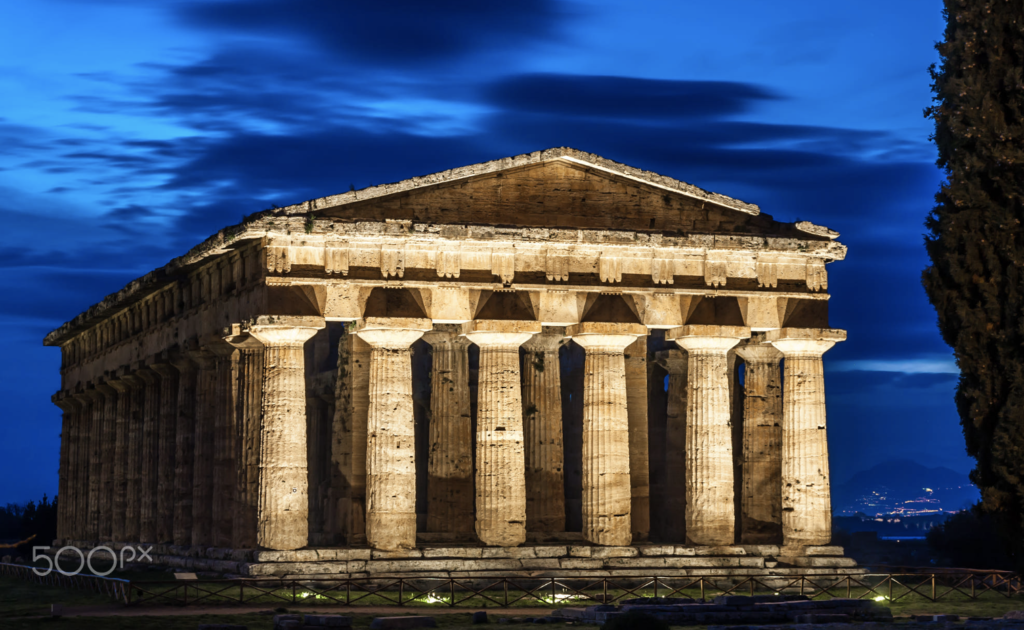
Velia: The archeological site of the ancient Greek colony of Elea.
Velia is an archaeological site with a rich history. Originally named “Elia,” it was a Greek settlement. The site has monuments from various periods. Situated between Casal Velino and Marina di Ascea.
You’ll notice the watchtower on the hill coming from both directions. The tower overlooking the landscape of Ascea was built towards the end of the 13th century. It’s part of the fortified village built in medieval times on a hill about 71 meters above the sea. Velia is worth visiting if you are in the area.
How to get to Velia? The closest train station is Marina di Ascea, around 4 km away from Velia archeological site.
The Charterhouse of St Lawrence in Padula
Padula is a town in the inner Cilento region. It’s famous for the Certosa di Padula, a UNESCO World Heritage Site since 1998. It’s an ancient monastery. As a UNESCO site, it’s one of the main attractions of the region.
The Certosa of Padula, also known as the Certosa di San Lorenzo (Charterhouse of St Lawrence). The complex is a Carthusian monastery. Its construction began in the 14th century and was only completed in the 19th century.
Visitors can explore the monument and its attractions, like the impressive gardens and cloisters. The site features 3 cloisters, a courtyard, a library, and a church. Remarkable the room of the library. You can also see the large kitchen and the monks’ cells. The surrounding area was used for cultivation.
The Certosa is considered one of the most splendid Baroque monumental complexes in Southern Italy. It’s the biggest Carthusian monastery in Italy and one of the largest in Europe.
Nature and Vallo Di Diano National Park
Outdoor Activities and Adventure
Pertosa-Auletta Caves (Grotte di Pertosa-Auletta)
Located within the Alburni Mountain range. the Pertosa-Auletta Caves are one of the most interesting places to visit in Cilento.
These caves in Italy are special, as inside the cave there is an underground river called the Negro. You can hop on a boat and sail through the cave. This is the only place in Italy where you can take a boat trip inside a cave.
Grotte di Castelcivita
The Castelcivita cave stretches deep into the mountain. Accessible with guided tours. The shortest tour is around 1 hour.
It’s a spectacular cave and less visited than the one in Pertosa. The cave is filled with impressive formations, stalactites, and stalagmites.
You can also visit the little city of Castelcivita for lunch or dinner on a day trip.
Oasi WWF di Morigerati
The Bussento Cave Oasis is a protected area by WWF Italy. Around 600 hectares, with natural pathways, a good place to hike and explore the nature. Near the city of Sapri.
Trentinara Zipline – Cilento in Volo
If you like adventure and adrenaline There is a zipline in Cilento. It is located in Trentinara. Fly through the sky on a rope, and you will see the panorama and nature from high up. It’s a fun and exciting outdoor activity perfect if you like to have thrilling adventures.
Prebook your Zip-line experience online here.
Oasi Fiume Alento / Alento River Oasis
It is a Special Area of Conservation in the heart of the Vallo di Diano National Park.
Alento River Oasis is a huge nature park (Around 3000 hectares) near the Alento River. The park offers a lot of cool things to do. You can enjoy nature and other outdoor activities. God for bird-watching and peaceful walks by the artificial lake of the dam. It’s a great place to relax in nature and have a good time. Usually opens on the weekend. During the high season is visitable every day.
They have awesome activities like canoe excursions, horse riding, and mountain biking.
Near the city of Agropoli.
It’s around 60 minutes drive from Salerno. To reach there by car take the route of S.S. 18 towards Agropoli. Keep heading towards Vallo della Lucania. Take the exit: OASI FIUME ALENTO.
Rafting in Cilento
Rafting is possible in various locations in Cilento: On the River Calore, River Sele, and Tanagro too.
Rafting in Calabria
If you like rafting there are great places to go in the Pollino National Park too.
Even though this is in Calabria, it’s close to Cilento, right at the border of the two regions. And you can pre-book it online.
Book your rafting adventure on the scenic River Lao.
There is also canyoning on River Iannello avalible.
Both activities are in Laino Borgo, Calabria.
Gole del Calore
Is a fantastic area in the National Park, near Felitto. In the Calore Gorges, you can go hiking, trekking on the pathways, and enjoy the stunning landscape, made by the river. You can bathe in the water during summer or rent a canoe. You can reach it by walking from Felitto.
Hiking Calore Gorge Excursion. This tour includes delicious homemade fusilli lunch prepared just for you!
What else to do?
Take a boat tour and go snorkeling:
Especially if you are staying near Castellabate, Camerota, or Sapri.
Piscotta Marina also has some fantastic beach coves to explore. The water is pristine almost everywhere in the region. One of the most popular places for boat tours among the locals is the Baia del Infreschi or around the cliffs and caves of Cape Palinuro. Cala Bianca and Baia Boun Dormire are among the best beaches in Cilento.
Visit the abandoned villages:
In Cilento, there are multiple abandoned villages you can explore. The most famous one is Rusccigno Vecchio, but Rofrano is also very interesting. You can hike up to San Severino near Centola, a true off-the-beaten-track destination in Cilento.
Festivals and Local Events in Cilento
With updated dates for 2024
Every village and town has a special day for their patron saint.
Usually, there is a procession where the statue of the saint is taken outside and accompanied by their faithful around the village.
During these celebrations, fairs and markets take place, along with dances and various forms of entertainment.
There are thematic festivities that focus on music or street art. Many of these events are linked to local cuisine, celebrating the unique products of the area.
“Sagra” is another type of festivities held towards the end of summer and the beginning of autumn. They are popular festivals that celebrate harvest events or the annual yield.
Sagras are a gold mine for gastronomy enthusiasts. They’re the real culinary treasures, outshining the fancy restaurants. Go to a village celebration, and you can eat food prepared by Italian grandmas (nonna). Try new meals and desserts, all made with fresh and seasonal ingredients.
I’ve curated a selection of the most popular events and celebrations in Cilento. Of course, I’ve included my absolute favourites. Below is the list categorised by each month, along with the updated dates for 2023:
In April
In Cilento, there are famous celebrations like the Artichoke Days in Paestum, which happen every spring around April.
The dates for 2024 are:
Artichoke Festival of Paestum, April 24th – May 1st, 2024
In June and July
The Meeting del Mare in Camerota is a music event with concerts during the summer. Three days of concerts on the beach at the beginning of June.
The city of Vallo della Lucania holds concerts during the day of Saint Pantaleone. Celebrations for Saint Pantaleone are on the 27th of July every year. San Pantaleo is the guardian of both the whole region and the city.
In August
Perito hosts a charming festa called “Festa del Bosco”.During the celebration in the evenings, you can have dinner under the chestnut trees in the forest. Every year in August, usually from August 6 to 13. My absolute favorite in the region.
2024 dates not out yet
You can try homemade fusilli pasta in the village of Felito, during the days of “Sagra del Fusillo Felittese“.From August 12th to August 22nd, 2023. This culinary event, named after “ciccimmaretati,” a traditional peasant soup, takes place in a chestnut forest. The last time I was there, a grandma hosted a stall where you could even try shaping the fusilli yourself. I didn’t have much success, but it was fun to give it a shot!
Ciccimmaretati in Stio From August 17th to August 23rd, 2023. This culinary event, named after “ciccimmaretati,” a traditional local soup, takes place in a chestnut forest.
Ciccimmaretati Dates for 2024 are from August 17th to August 23rd, 2024.
Also every year in August is held the Festa degli Antichi Sapori(Festival of Ancient Flavors). This celebration is in the small village of Mandia. It’s an event to try local dishes and enjoy folk music.From August 18th, 19th, and 20th, 2023.
Festa del Fico Bianco del Cilento in Giungano. In San Giuseppe ( a district in Giungano). The event is dedicated to the famous white fig. The white fig is a special variety of fig, famous in Cilento.From August 20th to August 24th, 2023.
In September
The Festival degli Antichi Suoni (Festival of Ancient Sounds) of Novi Velia is at the beginning of September every year. This event brings together food enthusiasts and lovers of folk music. An event that locals eagerly await, and the atmosphere is absolutely fantastic. From September 1st to September 3rd, 2023.
Not to miss the Fiera della Frecagnola in Cannalonga. Every year during September.
Cannalonga is a small village near Vallo della Lucania. The village is known for its special ragú made with goat meat. In this celebration, you can enjoy tasting the “bollito di capra”. It’s a traditional dish where goat meat is boiled until tender and then typically served with tomato sauce and pasta. If you’re not a fan of meat, no problem at all! The local farmers also produce excellent goat cheese. From September 6th to September 10th, 2023.
Sagra del Pesce (Fish Festival) in Pioppi from September 8th to 10th. It’s the 52nd edition in 2023 and a summer highlight. Pioppi is like the hometown of the Mediterranean Diet. So, try some delicious fish and enjoy the folk music.
in October / November
The Paestum Balloon Festival is a fantastic event. You can see the Greek temples from high above and the colourful hot air balloons floating in the sky. A truly special experience. Near the Archaeological Site of Paestum, from September 30th to October 8th, 2023.
And don’t miss the Sagra della Pastorella Cuccarese in Cuccaro Vetere! The Pastorelle are deep-fried pastries filled with delicious chestnut cream, resembling small pies. From October 31st to November 1st.
How to Get to Cilento?
By train:
There is a regional train line connecting some villages and towns directly with Naples and Salerno. It’s quite frequent, almost every hour. The journey from Naples to Sapri takes around 2 hours with the regional train. It stops at Capaccio, Paestum, Agropoli, Omignano Scalo, Vallo Scalo, Marina di Ascea, Piscotta-Palinuro, Centola, Policastro-Busenttino and Sapri.
The intercity line heading to Calabria also stops in some of the villages, offering a quicker alternative to reach Agropoli, Ascea, or Sapri.
To reach Vallo della Lucania, you have to get off at the Vallo Scalo station and take a bus from here. Usually, every regional train has a connecting bus service just outside of the station.
By Bus:
Most of the villages are only connected by buses. The remote areas have infrequent services. Some villages do not even have bus service on Sundays.
It’s better to rent a car if you want to explore multiple places in a short time in Cilento.
Ferry: There are ferry connections with Salerno and Capri during the summer from coastal towns like Acciaroli, Agropoli, and sometimes from Casal Velino too.
By Car:
If you want to rent a car, the best place is Salerno, you can find multiple car rental a offices near the central station.
When you buy through links on my site, I may earn a commission at no extra cost to You. It keeps the blog 100% reader-supported and free of annoying ads. Thank you!
